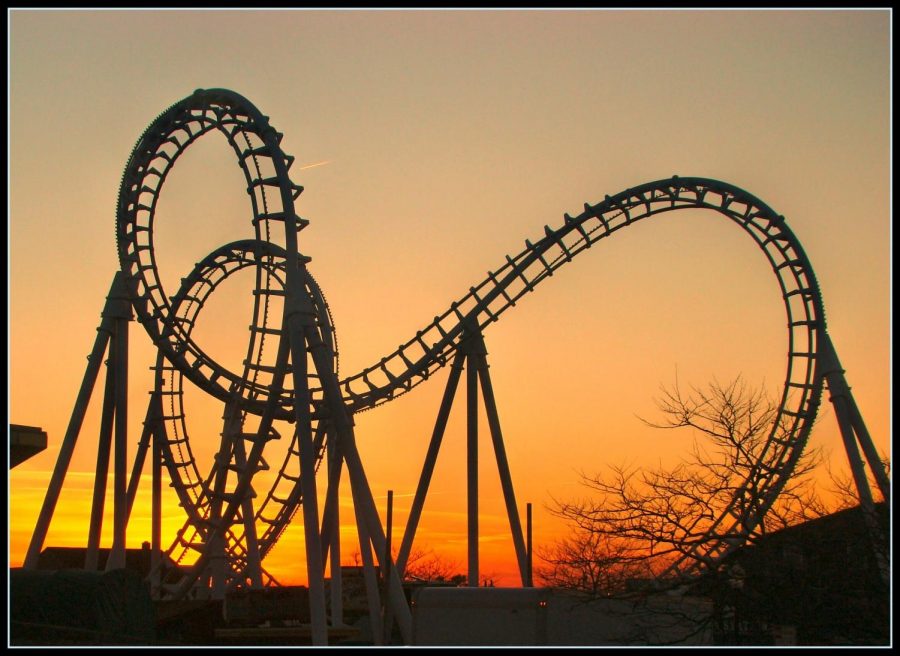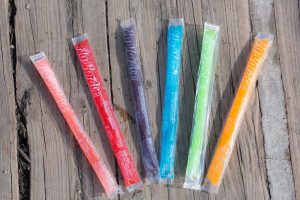Buckle up for a wild ride, and celebrate National Roller Coaster Day
August 16, 2021
Every year on August 16th, thrill seekers flock to amusement parks all over the world to quench their thirst for a high octane roller coaster ride. According to National Day Calendar.com, “The day commemorates the first vertical loop roller coaster which was patented by Edwin Prescott on this day in 1898. A roller coaster consists of one or multiple cars on a track. While they are similar to railroad systems in design, the inclines and vertical loops incorporated in the structures aren’t for transportation. These elements boost the thrills roller coaster enthusiasts seek!”
Roller coasters have been a staple of the iconic amusement park, and roller coasters have captivated thrill seekers for countless generations. They are truly anything but new though, as roller coasters originated centuries ago.
According to an article from the National Roller Coaster Museum, “The oldest roller coasters descended from the so-called “Russian Mountains,”. These were specially constructed hills of ice located especially around Saint Petersburg, Russia. Built in the 17th century, the slides became popular with the Russian upper class. Catherine II of Russia was such a fan of these attractions that she had a few of these slides built on her own property.”
These original roller coasters were far from the ones we ride today, as they were constructed almost entirely from ice.
These “ice coasters” set the precedent for the first official roller coaster back in 1817. According to an article from Business Insider, “The first complete roller coaster broke onto the scene in 1817, in Paris. It was known as The Promenades-Aériennes, or The Aerial Walk. Passengers walked up a set of stairs to ride a bench down the 600-foot track at 40 mph.”
Paris’s coaster remained as the primary blueprint for roller coasters, as European countries seemed to dominate in the construction of roller coasters. This was until the Mauch Chunk switchback railway here in modern day Jim Thorpe Pennsylvania became the model for roller coasters within the United States.
According to an article from Britannica.com, “Its origins were in Gravity Road, which mining company entrepreneur Josiah White built in 1827 to haul coal from the mines at Summit Hill to the Lehigh River landing at Mauch Chunk (now the town of Jim Thorpe)—a 9-mile (14.5-km) downhill journey. Trains of as many as 14 cars, loaded with 50,000 pounds (23,000 kg) of anthracite coal, sped down the mountain under the command of a single courageous “runner,” who operated a brake lever. Mules dragged the cars back up the mountain. Coal was hauled in the morning, but increasingly the afternoon runs along Gravity Road carried passengers paying 50 cents per ride.
By the mid-19th century, the demand for coal was increasing, so White added a backtrack with two 120-horsepower steam engines at the top of nearby Mount Pisgah, which pulled the trains up the incline of 664 vertical feet (202 metres), assisted by “barney,” or “safety,” cars. The ingenious addition of a ratchet rail running between the dual two-rail tracks, when engaged by a ratchet on the barney, prevented the cars from rolling backward. This safety device, later perfected, also gave rise to the clanking sound that would characterize future roller coasters. In 1872 a tunnel was completed that became a more efficient coal route than Gravity Road, but the Mauch Chunk Switchback continued as a thrill ride. By 1873 some 35,000 tourists annually were taking an 80-minute, 18-mile (29-km) scenic ride up and down Mount Pisgah and neighboring Mount Jefferson for the cost of $1.”
Famous imagineer, LaMarcus Thompson, used this as his inspiration when he revealed his switchback coaster at Coney Island amusement park in 1884.
According to an article from History.com, “The switchback railway, it was the brainchild of LaMarcus Thompson, traveled approximately six miles per hour and cost a nickel to ride. The new entertainment was an instant success and by the turn of the century there were hundreds of roller coasters around the country.”
While this might’ve been the first modern roller coaster concept it’s surely not considered the oldest roller coaster, for it’s no longer in operation. That title actually belongs to Leap the Dips, a roller coaster located in Altoona Pennsylvania.
According to the American Coaster Enthusiasts, “Designed by E. Joy Morris and built by the Federal Construction Company, Leap-the-Dips is the oldest operating roller coaster in the world. Opened in 1902, it is the last remaining example of nearly 400 figure-eight type coasters built at American amusement parks between 1889 and 1922. Closed in 1985, it was saved from demolition by local preservationists and members of the American Coaster Enthusiasts. After a complete restoration, it reopened in 1999, again offering its classic ride experience for future generations to enjoy.”
The roaring 20’s saw an increase in the construction of roller coasters. According to an article from Britannica.com, “The golden age of coasters arrived in the United States in the 1920s, when more than 1,500 roller coasters were in operation in the country. Coasters were among the biggest attractions at amusement parks, and improvements in safety helped to advance coaster design. John Miller, who was chief engineer for La Marcus Thompson and worked with other designers, owned more than 100 patents, notably on safety features. His most important was the safety chain dog, or safety ratchet (patented in 1910), which prevented cars from rolling backward down the lift hill in the event the pull chain broke. It attached to the track and clicked onto the rungs of the chain. His underfriction wheels, or upstop wheels (1919), kept coaster cars locked on their tracks, which enabled them to safely reach high speeds, bank suddenly, and turn upside down.”
The Great Depression impacted various aspects of entertainment greatly, and the amusement park industry took a massive toll during this harsh time period. According to an article from Britannica.com “Roller coasters experienced a downturn in the United States during the Great Depression of the 1930s. A shortage of disposable income meant that hundreds of coasters were torn down and very few were built. By mid-century only Philadelphia Toboggan Company and National Amusement Devices, led by Aurel Vaszin, were still building coasters. Major parks were turned to rubble (Riverview, 1967; Coney Island near Cincinnati, 1970; and Palisades, 1972), while others were abandoned as ghost towns.”
The opening of Disneyland in 1955 revitalized the roller coaster industry, and gave birth to the world’s first steel roller coaster, the Matterhorn. According to an article from Coasterpedia.net, “Arrow Dynamics first introduced the steel roller coaster to feature tubular track to the thrill industry with their creations of Matterhorn Bobsleds at Disneyland Park in 1959.”
Ever since then the roller coaster industry has been booming, as parks are constantly trying to eclipse new thrill levels and beat old records. Coasters have grown from simple ice slides to now marvelous rides that propel riders at lightning speeds, flip them upside down, and send them plunging down massive drops.
This August 16th try one of these steel and wooden giants, for it’s no secret that you’ll be in for the ride of your life.









